23 Jason Road, Thistletown’s first house, built around 1802
Thistletown, perhaps Toronto’s best-hidden historic neighbourhood, is located at the intersection of Albion Road and Islington Avenue. The village, which was never incorporated, was established in the 1840s, servicing the important Albion Road. The settlement got its name from a prominent local family.
Albion Road was surveyed as early as 1799, predating the grid-based concession farm plot and road system, as an extension of Weston Road. Albion passed through other lost villages such as Clairville (at Steeles) to Albion Township (later amalgamated into the Town of Caledon). The road’s diagonal path made the route ideal for farmers to bring their produce and livestock to market in the larger town of Weston, or all the way into Toronto, particularly before the railways were built. At its height, Thistletown had a population of several hundred, a community hall, an inn and tavern, and several shops at the corner of Albion and Islington.
Islington and Albion today
The village and its name live on today, though its historic legacy is more hidden than that of Agincourt. For example, not a single historic building remains on either of the two main roads. And unlike Agincourt, which has expanded in Torontonian’s minds well beyond the small village, “Thistletown” has been crowded out of many mental maps by the modern suburb of Rexdale, which is now often used to describe the whole swath of northern Etobicoke.
Despite being missed by the major steam railways such as the Grand Trunk and the Toronto, Grey and Bruce, traffic on Albion Road towards Weston and Toronto kept the village from declining as much as other nearby settlements that were also bypassed. However, the Toronto Suburban Railway built an extension of its successful Weston suburban radial as far as Woodbridge and directly served the community until 1926, when the line was abandoned.
By the 1950s, Toronto’s suburban sprawl began to creep into north Etobicoke Township. Developer Rex Heslop began development of a massive industrial and residential tract nearby that he would call Rexdale (Heslop went on to build the large Delrex neighbourhood in Georgetown, doubling that town’s size almost overnight). Both Albion Road and Islington Avenue were widened, Albion straightened (Bankfield and Edgebrook drives follow an older alignment), and all village commercial and institutional buildings destroyed. Today, 1960s-style retail strips, with businesses largely catering to the neighbourhood’s large South Asian population, are predominant built-form.
Off the main arterials, much evidence of the village’s history is present. One of Toronto’s oldest residences is located on Jason Drive (shown at top of post), built as early as 1802. The Franklin Carmichael Art Centre, located on Riverdale Drive, was the home of the namesake Group of Seven painter, and continues on as a City of Toronto cultural centre.
Franklin Carmichael Art Centre on Riverdale Drive
A garden centre on Bankfield Drive provides a vestige of Thistletown’s rural past.

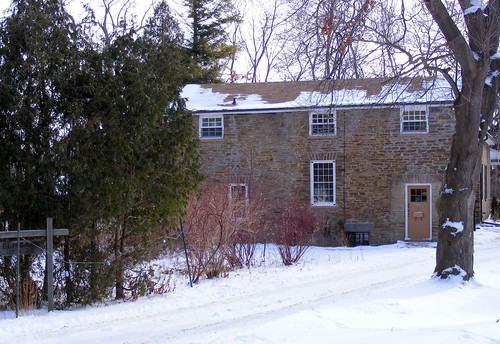
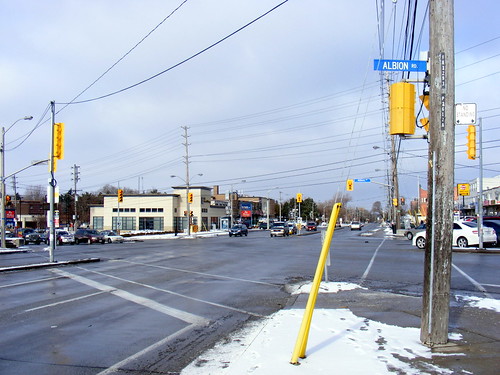

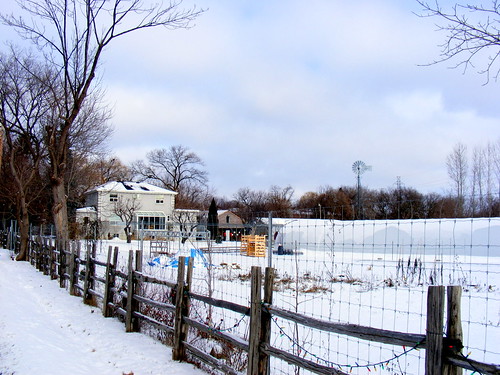

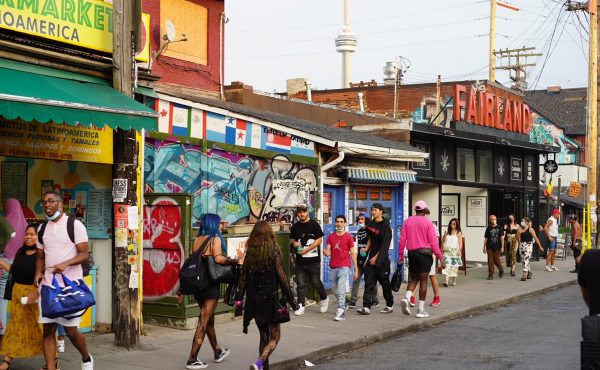
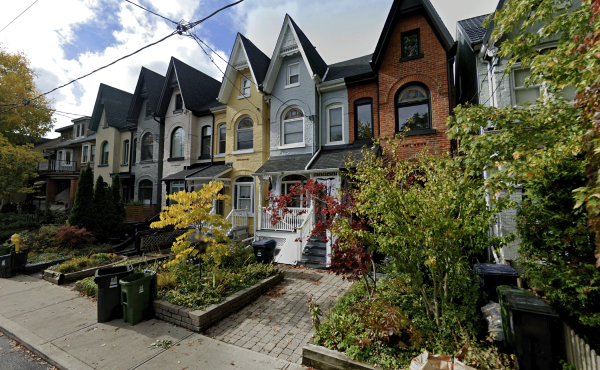
5 comments
This is good stuff that animates the dreariness of postwar development along the main roads in and out of the city.
I used to work at the corner of Albion & Islington for many years as a teenager, and indeed, there’s little to denote that corner as “Thistletown” (save the Collegiate Institute a little further south on Islington). While it’s easy to dismiss “progress” I’d have to at least say that the current crossroads is a pretty interesting mix of Asian businesses offering excellent food and that someone should be taking notes from Scarborough’s Lawrence East neighbourhood in how to market themselves better.
Between Franklin Carmichael and Jason Road is (unless it’s been removed in recent months) one of Toronto’s unsung unaltered 50s modern domestic landmarks, built by architect Jan Albarda for himself–a remarkable little quasi-Usonian nail-clipping of a house…
I was a resident of the village of Thistletown from 1952 to 1965. The Franklin Carmichael Arts Centre was the home of Dr. Ann Curtain, not Franklin Carmichael. It was Dr. Curtain who left this estate to the borough of Etobicoke for the benefit of everyone. I lived at 14 Riverdale Drive, just down the road. Dr. Curtain was a friend and deserves recognition for her contribution.
Hi,
Hans Albarda is right. The building Adam is writing about must be the ‘studio’ in the garden of dr. Curtain’s house, done by Jan Albarda, who has designed a few houses more in that area. He also did the now demolished Anglican Church in Thistletown and an addition to the church on Albion (not the ‘jazzy’ part).There is another addition to The Good Shepherd on Weston Rd, one in Woodbridge and one up North York. He designed the Weston Swimming Pool, the demolished Weston City Hall and the Royal York Medical Centre.
Jan Albarda was a highly remarkable person, who invited the whole bunch of modern architects of CIAM for a meeting in Delft in December 1930, being a student of only 20! In Ontario he designed and built a 100 harpsichords etc.!
On June 7 next (Albarda’s 100th birthday) we will launch a book Jan Albarda en De Groep van Delft, which we want to be published in English in Canada. We need your support!!
dr Jan Molema/ ir. Suzy Leemans